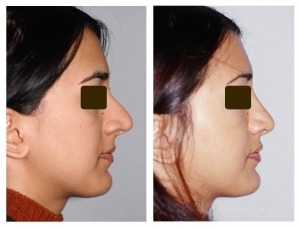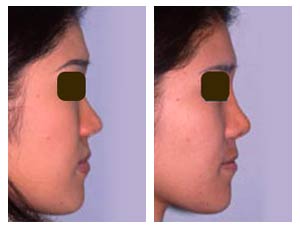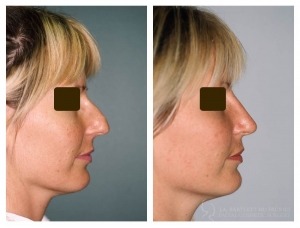Cosmetic Nose Surgery – FAQs
COMMONLY ASKED QUESTIONS ABOUT SURGICAL PROCEDURES – RHINOPLASTY
How is cosmetic nose surgery done?
Anesthesia
Rhinoplasty can be done under local anesthetic with sedation “twilight sedation “ or general anesthetic both of which are extremely safe. It ultimately comes down to patient preference.
How is the procedure done?
Incisions needed for nasal surgery are made just inside the rim of each nostril. Working through these incisions, Dr Bartlett can shave away excess bone and cartilage to reduce a hump, and reposition cartilage and bone to narrow the nose. Surgery may also involve sculpting and narrowing the tip to achieve a more refined looking tip.
In some cases, Dr Bartlett may make an additional incision across the base of the nose, between the nostrils. This is referred to as an external rhinoplasty.
To reduce flaring nostrils, incisions also may be made on each side of the nose where the nostril joins the face. These incisions if they are made are usually undetectable when they heal.
At the completion of the procedure, the tissues are redraped over the new frame and the incisions are closed. A plastic splint is then placed over the nose and worn for 5 – 7 days
What should I expect after cosmetic nose surgery?
Most patients report mild discomfort for the first few days, easily controlled with mild pain medication. Your nose will be stuffy for a few days, but you must not blow your nose for at least a week. If you wear glasses, they must not put pressure on your nose for the first two weeks. This can be achieved with use of tape to secure your glasses to your forehead.
There is usually a light internal nasal dressing which you remove the day after surgery. An outer splint remains on for five to seven days, removed at the first postoperative visit with Dr Bartlett. You should expect to experience some swelling and bruising around your eyes. Cold compresses will help reduce this and make you feel more comfortable. Most of the bruising and swelling subsides in about ten days after surgery. Cover makeup can be applied to the skin to camouflage any bruising.
When can I return to work?
Most patients return to work within a week.
REAL PATIENT STORIES:

OPEN (EXTERNAL) RHINOPLASTY
This patient has a more challenging issue with the entire nose being overprojected i.e. further out from the face than desired. The goal of rhinoplasty was to lower the entire nose. Because of the degree of reduction necessary, this was done with an external rhinoplasty approach. This involves a small incision at the base of the nose. Notice the marked change in the size of the nose while still maintaining a natural look to the nose. The tip cannot be made as angular or sharp as the patients illustrated above on account of a greater skin thickness. This is not a drawback however as a sharp nasal tip would not match her overall features and skin type.

NASAL AUGMENTATION
This patient underwent augmentation of the bridge of the nose. This can be done with a variety of materials but generally involves placement of a graft of your own cartilage or at times use of a synthetic implant such as Goretex®. An important part of the evaluation includes analysis of your chin. People who want rhinoplasty to make large noses smaller often may benefit from balancing the profile with augmenting what may be a ‘weak’ chin as a weak chin may make your nose look more prominent. This is referred to as chin augmentation surgery.

CLOSED (ENDONASAL) RHINOPLASTY
This patient was mostly concerned about the hump on her nose and in fact the tip did not have to be set back that much. The changes were therefore achieved all through internal incisions- i.e. endonasal rhinoplasty. In some rhinoplasty patients, there is not a desire to make the nose smaller but rather augment or increase the size of the nose.

CLOSED (ENDONASAL) RHINOPLASTY
This patient has relatively thin skin and thus with rhinoplasty a sharper tip can be achieved. With thicker skin, it is difficult to get as sharp a tip but also with this skin type it may not be desirable.



